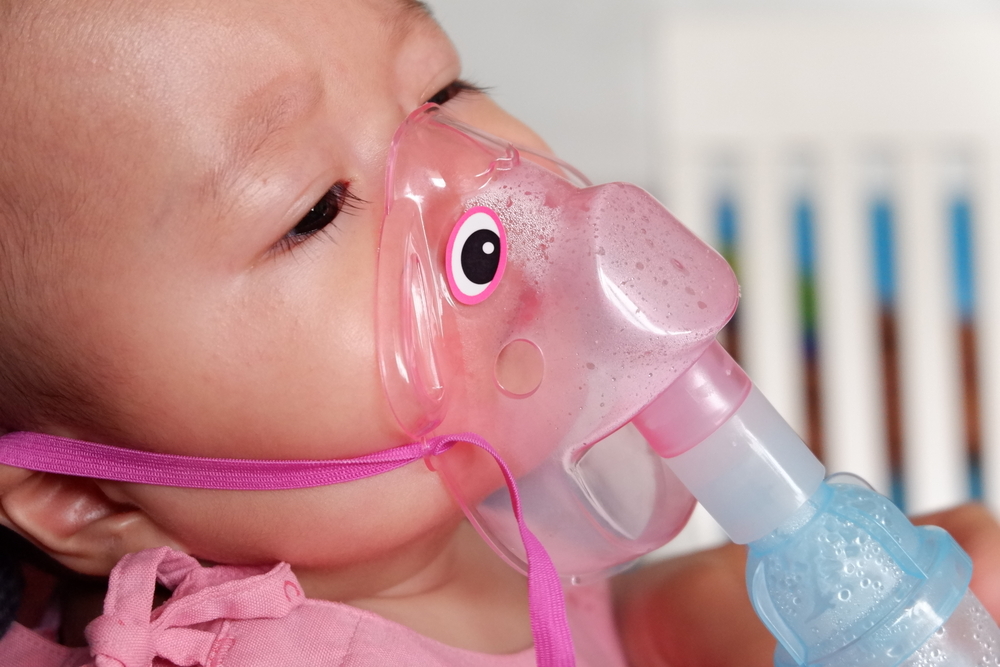Respiratory syncytial virus (RSV) annually threatens many babies and there is currently no drug or vaccine to combat the disease. A lot of research and several clinical trials are ongoing. We spoke with Xavier Saelens, professor at Ghent University and VIB about the developments in this area.
Respiratory syncytial virus (RSV) is a common cold virus. It generally replicates in the upper respiratory tract, causing only mild, benign symptoms. However, in asthma patients it may lead to exaggerated asthma attacks, and in infants, especially in newborns, the virus can cause lower respiratory tract infections. The virus then replicates in the lungs and ends up in the bronchia, where it can massively replicate and cause inflammation. This can induce bronchiolitis. Cell and virus debris leads to airway obstruction, which might cause lack of oxygen. This only happens in a low percentage of cases, but since the virus is highly contagious and found globally, those numbers are still quite substantial. It is estimated that every year, around 200,000 children die from RSV. It is the most common cause of child mortality, second only to malaria. Another at-risk group is the elderly. When older people become hospitalized with respiratory problems, RSV often seems to be the cause.
What treatment is available for RSV?
Saelens: There is currently no treatment for RSV. Anti-inflammatory agents don’t really help much. If you have a lack of oxygen, you can get artificial breathing support, but there is no drug available that goes after the virus. There is nothing on the market yet.
What research is being conducted?
Saelens: In the last 5 years, more and more research about RSV is being performed. Many companies and academic groups are aware of the problem, and are now focusing on RSV. Researchers all over the world are looking for antiviral drugs and vaccines. One of the most advanced studies is being done by Ablynx. They have an ongoing Phase IIb clinical trial with anti-RSV nanobodies.
Clinical trials for anti-RSV drugs are often done in the elderly.
Doing a clinical trial to try to demonstrate protection against RSV is not easy. Although RSV comes in epidemics, the attack rate of the virus can vary. Testing a vaccine in infants is very difficult, because of the understandable safety concern. In addition, RSV often hits very early in life meaning that maternal vaccination is the best strategy to try to protect the very young. Clinical trials for anti-RSV drugs are often done in the elderly; for whom RSV also poses a significant threat.
How would such a vaccine work?
In the late 60s, a trial was performed in young children with a conventional vaccine (a chemically inactivated, dead RSV vaccine). The infants and children who had been vaccinated became much sicker upon RSV infection than the control children.
Saelens: In the late 60s, a trial was performed in young children with a conventional vaccine (a chemically inactivated, dead RSV vaccine). Unfortunately, this approach failed completely. The infants and children who had been vaccinated became much sicker upon RSV infection than the control children. It appeared that not only did the vaccine not protect the patients, but it actually enhanced the effects of the disease.
Some companies are now focusing on live attenuated viruses to create vaccines. This means that immunization happens with a weakened version of the virus, hence it can only replicate to a limited extent. However, it is very difficult to find a good balance between creating sufficient immunity without causing disease. A live attenuated vaccine should not be used in immune-compromised patients.
Another approach is to use recombinant protein based vaccines. Here, most scientists focus on the fusion protein of the virus. This fusion protein is present on the RSV’s surface and is indispensable for the virus life cycle as it allows it to enter the host cells in the respiratory tract. Many research groups are trying to create antibodies that bind to this fusion protein and thereby neutralize the virus. One of the issues here is that the fusion proteins are intrinsically unstable, a property that is essential for entrance into the host cell. Because of this instability, it has been very difficult to reproduce the RSV fusion protein in its prefusion; metastable conformation in a laboratory setting. Nonetheless, scientists are now able to produce the fusion protein as it appears on the infectious virus. This might greatly improve the development of a vaccine that is potent enough to prevent RSV. Novavax (Gaithersburg, MD) is one of the companies following a fusion protein vaccine approach for RSV.
Research is fun and tough. It requires perseverance, hard work and also a bit of luck.
How close is your group to developing an RSV vaccine or drug?
Saelens: Our group proposed a RSV vaccine approach some years ago and the Phase I trial, in collaboration with the Canadian company Immunovaccine, is about to be finished. The outcome looks promising. The vaccine is safe in adults, and we see an immune response. The results will likely be published later this year. We are looking forward to a follow up trial that may involve an additional partner.
In 2017 we also published a study on RSV-neutralizing single domain antibodies (also known as Nanobodies®). These antibodies show a very potent in vitro response and also work in mice. Our institute is keen to advance these findings, perhaps in collaboration with a private partner.
If you want to know more about Nanobodies, read the article “Nanodobies®: Small magical molecules for big difficult diseases.”
What are your long term ambitions?
Saelens: Research is fun and tough. It requires perseverance, hard work and also a bit of luck. I love training people to become good researchers. I also hope that one day one of the things we develop in the lab, thanks to the efforts of the people in my group, will lead to a medicine that helps patients.


